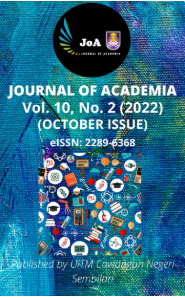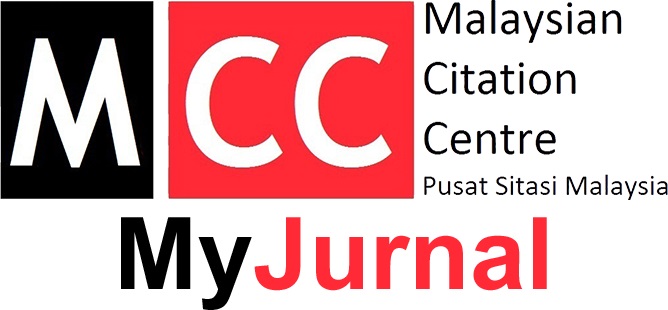SOCIAL MEDIA RELIANCE IN ORGANIZATION: CHOOSING THE RIGHT MEDIUM TO ENHANCE JOB PERFORMANCE
Keywords:
reliance, employees, job performance, organization, social mediaAbstract
Social media has become popular for communication, interaction and knowledge sharing on the internet.
Most of the industry uses social media as a medium of communication to interact with people in order
to fulfil number of purposes such as work and personal matter, including the workplace as well. Reliance
on social media has played an important role from the moment it been introduced, allowing connections
to be made throughout the world, given the increasing level of interaction and socialization in the lives
of various groups. This study aims to describe social media as popular medium among employees to
communicate among themselves. Social media now is changing the methods of social connectivity and
a part of important aspect to improve employees job performance. It also highlighted how organization
adapted social media in their workplace as the right medium to communicate in helping them with their
daily routine in organization and working environment. This study also looked into the reason why
some individual depends on social media as their channel to communicate among the colleagues within
the organization. Study found that WhatsApp is the most chosen medium as a platform to increase job
performance in organization. The dependence of social media in organization related to the usage as
medium to communicate. It has also identified the factors that encourage users to choose it as medium
in organization. It is important to identify the reasons of choosing the right tools, as it is important for
the organization to get benefit from the usage or choosing the selected channel or medium to
communicate.
References
Ahmed, S., & Mokhtaruddin, A. (2020). The Role of social media use in social coordination among relief local
organizations during response to humanitarian crisis in Yemen. Jurnal Pengajian Media Malaysia, 22(1), 51-68.
Ahn, M.J., & Bretschneider,S. (2011). Politics of E- Government: E-Government and the Political Control of
Bureaucracy. Public Administration Review, May/June, 414-424.
Ainaa, I. I., Ahmad, F. A., & Najiah, S. (2017). The Use of social media, e-mail and instant messaging as the
predictors of an employee’s work performance. Journal of Academia UiTM Negeri Sembilan, 5, 127-136.
Agarwal, S., & Mital, M. (2009). An exploratory study of indian university students’ use of social networking
web sites: implications for the workplace. Business Communication Quarterly, 72(1), 105-110.
Bala, H., Massey, A. P., & Seol, S. (2019). Social media in the workplace.: Influence of employee agility and
innovate behaviour. Proceedings of the 52nd Hawaii International Conference on System Scicences.
Bennett, J., Owers.M., Pitt, M., & Tucker, M. (2010). Workplace of social networking. Property Management,
(3), 138-148.
Bertot, J. C., Jaeger, P. T., & Grimes J. M. (2012). Promoting Transparancy and Accountability through ICTs,
social media and collaborative e-government. Transforming Government: People, Process and Policy, 6(1), 78
Boyd, D. M. & Ellison, N. B. (2007). Social network sites: Definition, History, and Scholarship. Journal of
Computer-Mediated Communication, 13(1), 210-230.
Creswell, J. W. (2012). Educational Research, Planning, Conducting and Evaluating Quantitative and Qualitative
Research. (4th ed). Boston: Pearson.
Davis, F. D. (1989). Perceived usefulness, perceived ease of use and user acceptance of information technology.
MIS Quartely, 13, 319-340.
Dunne, A., Lawlor, M. A. & Rowley, J. (2010). Young people’s use of online social networking sites- a uses and
gratification perspectives. Journal of Research in Interactive, 4(1), 46-58.
Ellison, N. B., Steinfield, C., Lampe, C. (2007). The benefits of Facebook "friends:" Social capital and college
students' use of online social network sites. Journal of Computer-Mediated Communication, 12(4), 1143-1168
Fairus, Rauf., Marina, H., Siti Fatimah, O., & Hema, S. (2010). Impact of Online Social Network in Educational
Institution: A case study in UNISEL. Proceedings of Regional Conference on Knowledge Integration in ICT.
Foster, M. K., Francescucci, A., & West, B. C. (2010). Why users’ participation in online social networks.
International Journal of e-Business Management, 4(1), 3-19.
George, M. (2007). Security for third level education organisations and other educational bodies. Computer Fraud
& Security, 7, 6-9.
Grace, S. R., Abdul, B., & Zuhair, H. (2018). the impact of social media usage on employee and organization
performance: A study on social media tools used by and IT Multinational in Malaysia. Journal of Marketing and
Consumer Behavior in Emerging Markets, 1(7), 48-65.
Haythornthwaite, C. (2005). Social networks and internet connectivity effects. Information Communication and
Society, 8(2), 125-147.
Henari, T., & Indrupati, J. (2012). Entrepreneurial Success, using Online Social Networking: Evaluation,
Education, Business and Society. Contemporary Middle Eastern Issues, 5(1), 1-21.
Julian, H., & Chris, H. K. T. (2021). Choosing a social media platform: Genre and social ties in urban Malaysia.
International Journal of Communication, 15, 1-21.
Kane, K., Combre, J. R., & Berge, Z. L. (2010). Tapping into social networking: Collaborating enhances both
knowledge management and e-learning. VINE, 40(1), 62-70.
Kim, J. Y., Shim, J. P., & Ahn, K. M. (2011). Social networking service: Motivation, pleasure, and behavioural
intention to use. Journal of Computer Information Systems, 51(4), 92-101.
Kukreja, P., Sheehan, A. H., & Riggins, J. (2011). Use of social media by pharmacy preceptors. American Journal
of Pharmaceutical Education, 75(9), 1-5.
Lee, D., Rhee, Y., & Dunham, R. B. (2009). The role of organizational and individual characteristics in technology
acceptance. Journal of Human-Computer Interaction, 25(7), 623-646.
Li, D. C. (2011). Online social network acceptance: A social perspectives. Internet Research, 21(5), 562-580.
Mohamed, S., Sidek, S., Izharrudin, S. Z., Kudus, N., Hassan., & Noor, M. A. (2019). Social media usage and its
impact on work productivity at a Malaysian University. International Journal of Recent Technology and
Engineering, 8(15), 167-172.
Narimah, I, & Saodah, W, (2002). Kursus Komunikasi Organisasi. Bentong: PTS Publicattion and Distribution
Sdn Bhd.
Park, S.Y. (2009). An Analysis of the technology acceptance model in understanding university students’
behavioral intention to use e-learning. Educational Technology and Society, 12(3), 150-162.
Pillai, A., & Mukherjee, J. (2011). User acceptance of hedonic versus utilitarian social networking web sites.
Journal of Indian Business Research, 3(3), 180-191.
Ramayah, T. (2006). Interface characteristics, perceived ease of use and intention to use an online library in
Malaysia. Information Development, 22(2), 123-133.
Rauf, M. F. A, Hassan, M., Omar, S. F., & Subramanian, H. (2010). Impact of online social network towards
communication effectiveness in educational: A case study of UNISEL. Proceedings of Regional Conference on
Knowledge Integration in ICT 2010.
Romero, C. L., Constantinides, E., & Carmen, M. D. (2011). Consumer adoption of social networking sites:
implications for theory and practice. Journal of Research in Interactive Marketing, 5(2), 170-188.
Serrat, 0. (2017). Bridging Organizational Silos. Knowledge Solutions. Springer, Singapore. 711-716.
Shin, D. H. (2010). Analysis of online social networks: a cross-national study. Online Information Review, 34(3),
-495.
Shu, W., & Chuang, Y. H. (2011). The perceived benefits of six-degree-separation social networks. Internet
Research, 21(1), 26-45.
Sledgianowski, D. & Kulviwat, S. (2009). Using social network sites: the effects of playfulness, critical mass and
trust in a hedonic context. Journal of Computer Information Systems, 49(4), 4-83.
Watanabe, R.M., Yoshida, M., & Watanabe, T. (2010). Social Network productivity in the use of SNS. Journal
of Knowledge Management, 14(6). 910-927.
William, B. K., & Sawyer, S. C. (2010). Using Information Technology: A Practical Introduction to Computers
and Communications. New York. Mc Graw Hill.
Wushe, T., & Shenje, J. (2019). The relationship between social media usage in the workplace and employee
productivity in the public sector: case study of government departments in Harare. SA Journal of Human Resource
Management, 17(0), a1116.
Zhang, W., Johnson, T. J., Seltzer, T., & Bichard, S. L. (2010). The revolution will be networked: The influenced
of social networking sites on political attitudes and behaviour. Social Science Computer Review, 28(1), 75-92.
Zyl, A. S. V. (2009). The impact of social networking 2.0 on organisations. The Electronic Library, 27(6), 906
Downloads
Published
Issue
Section
License
Copyright (c) 2022 Journal of Academia

This work is licensed under a Creative Commons Attribution-NonCommercial-NoDerivatives 4.0 International License.












